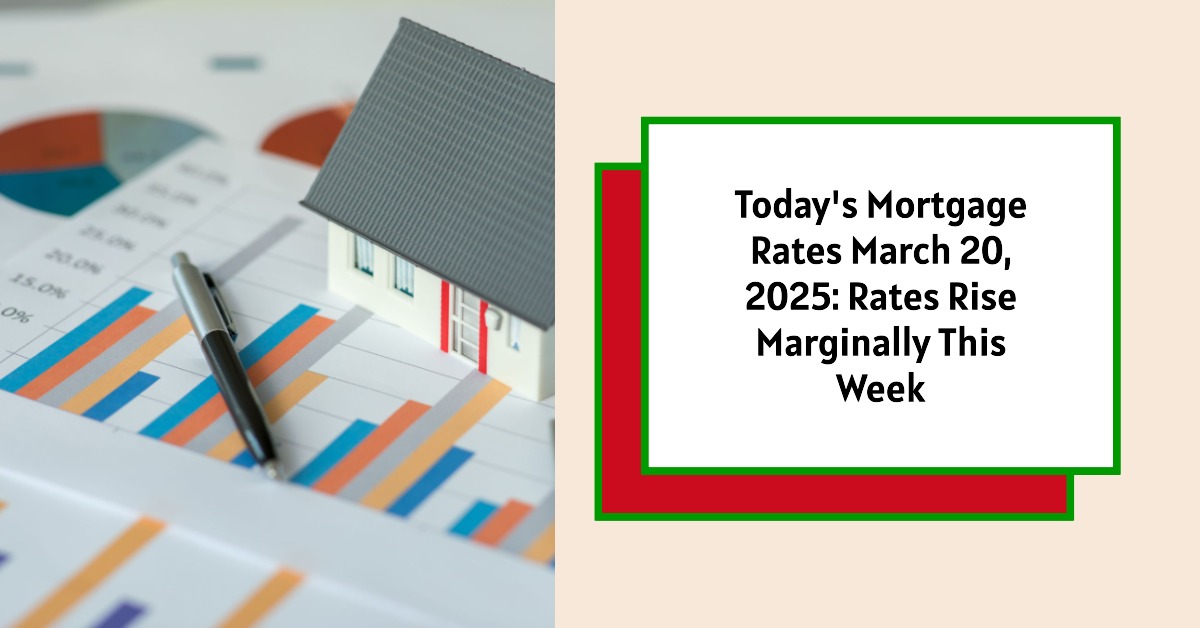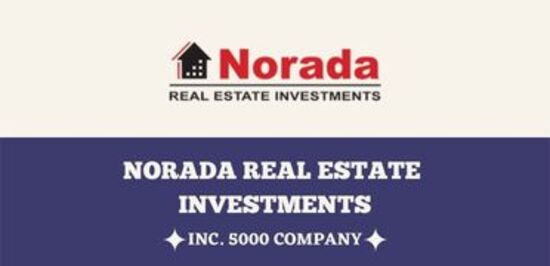Are you keeping an eye on mortgage rates? As of March 20, 2025, the mortgage market is showing a slight upward tick, with rates inching up for the second consecutive week. Despite this recent bump, it's important to remember that rates are still more favorable compared to where they stood this time last year.
Today's Mortgage Rates March 20, 2025: Rates Rise Marginally This Week
Key Takeaways:
- Mortgage rates have seen a marginal increase this week, continuing a recent trend.
- 30-year fixed mortgage rate: Currently averaging 6.61%.
- 15-year fixed mortgage rate: Averaging 5.98%.
- Overall, rates remain lower than they were in March 2024, presenting potential opportunities for buyers.
- Refinance rates are also available, with the 30-year fixed option averaging 6.62%.
Let's delve deeper into the current mortgage and refinance rate environment, examining the factors that are shaping these rates and exploring various payment scenarios to help you make informed decisions.
Today's Mortgage Rate Landscape
According to recent data from Zillow, here's a snapshot of the national average mortgage rates as of today:
| Loan Type | Interest Rate |
|---|---|
| 30-Year Fixed | 6.61% |
| 20-Year Fixed | 6.42% |
| 15-Year Fixed | 5.98% |
| 5/1 ARM | 6.71% |
| 7/1 ARM | 6.91% |
| 30-Year VA | 6.09% |
| 15-Year VA | 5.59% |
| 5/1 VA | 6.13% |
Dissecting the Different Mortgage Options
- The Ever-Popular Fixed-Rate Mortgage: This type of mortgage provides predictability with a consistent interest rate throughout the life of the loan.
- 30-Year Fixed: This remains a popular choice for many homebuyers due to its lower monthly payments, making homeownership more accessible. However, remember that you'll pay more interest over the long haul.
- 15-Year Fixed: If you're looking to build equity faster and save on interest, a 15-year fixed mortgage is a solid option. Be prepared for higher monthly payments compared to a 30-year loan.
- Adjustable-Rate Mortgages (ARMs): ARMs can be attractive due to their lower initial interest rates. However, it's crucial to understand the risk of rate adjustments after the initial fixed-rate period.
- 5/1 ARM: This ARM offers a fixed rate for the first five years, followed by annual adjustments. It could be a good fit if you anticipate moving or refinancing within that five-year timeframe.
- VA Loans – A Benefit for Veterans: Backed by the Department of Veterans Affairs, VA loans offer significant advantages to eligible veterans, active-duty service members, and surviving spouses. These loans often come with no down payment requirements and competitive interest rates.
Refinance Rates: What's on Offer Today?
If you're contemplating refinancing your existing mortgage, let's take a look at the average refinance rates currently available, drawing again from Zillow data:
| Loan Type | Interest Rate |
|---|---|
| 30-Year Fixed | 6.62% |
| 20-Year Fixed | 6.23% |
| 15-Year Fixed | 5.98% |
| 5/1 ARM | 6.74% |
| 7/1 ARM | 6.92% |
| 30-Year VA | 6.12% |
| 15-Year VA | 5.79% |
| 5/1 VA | 6.20% |
| 30-Year FHA | 6.21% |
| 15-Year FHA | 5.73% |
Deciding if Refinancing is Right for You
- Reasons to Refinance: Homeowners choose to refinance for various reasons, including securing a lower interest rate, shortening the loan term to pay off the mortgage faster, converting from an ARM to a fixed-rate mortgage, or tapping into home equity for other financial needs.
- The Purchase Rate vs. Refinance Rate Dynamic: It's not uncommon for refinance rates to be slightly higher than purchase rates. Therefore, it's essential to carefully evaluate your potential savings and closing costs before making a decision.
Recommended Read:
Mortgage Rates Trends as of March 19, 2025
Mortgage Rates Drop: Can You Finally Afford a $400,000 Home?
Expect High Mortgage Rates Until 2026: Fannie Mae's 2-Year Forecast
Delving into the Determinants of Mortgage Rates
Mortgage rates are not arbitrary figures; they are the result of a complex interplay of economic forces. Here's a more detailed look at the key factors that influence these rates:
- The Broader Economic Climate: The overall health of the economy is a primary driver of mortgage rates.
- A Thriving Economy: Typically, a strong economy leads to increased demand for credit, which in turn pushes mortgage rates higher.
- An Economy Under Pressure: Conversely, when the economy is struggling, mortgage rates often decrease to stimulate borrowing and encourage economic activity.
- Inflationary Pressures: Inflation, the rate at which prices for goods and services are rising, plays a significant role. High inflation erodes the value of money, prompting lenders to increase interest rates to compensate for the reduced purchasing power.
- The Federal Reserve's Influence: The Federal Reserve (also known as “The Fed”), the central bank of the United States, has a powerful influence on mortgage rates through its monetary policy decisions. The Fed's actions, such as adjusting the federal funds rate (the rate at which banks lend to each other overnight), can have a ripple effect on mortgage rates.
- Your Financial Profile: Your individual financial circumstances also play a crucial role in determining the mortgage rate you'll receive.
- Credit Score: A high credit score demonstrates responsible borrowing behavior and increases your chances of securing a lower interest rate.
- Down Payment: A larger down payment not only reduces the amount you need to borrow but also signals to lenders that you have more “skin in the game,” potentially leading to a better rate.
- Debt-to-Income Ratio (DTI): Lenders assess your DTI to determine your ability to manage your debt obligations. A lower DTI, indicating that you have a comfortable amount of income relative to your debts, is viewed favorably and can help you qualify for a more attractive interest rate.
Understanding the Impact: Mortgage Payment Scenarios
Let's break down how today's mortgage rates could translate into real-world monthly payments. Using the current average 30-year fixed mortgage rate of 6.61% as a benchmark, we'll explore several loan amount scenarios. Keep in mind that these calculations are estimates and do not include additional expenses such as property taxes, homeowners insurance premiums, or potential homeowners association (HOA) fees.
- Monthly Payment on a $150k Mortgage: With a $150,000 mortgage at a 6.61% interest rate, your estimated monthly payment for principal and interest would be approximately $962.
- Monthly Payment on a $200k Mortgage: If you were to borrow $200,000 at the same 6.61% rate, your monthly payment would be around $1,283 (principal and interest).
- Monthly Payment on a $300k Mortgage: For a $300,000 mortgage at 6.61%, you can anticipate a monthly payment of approximately $1,925 (principal and interest).
- Monthly Payment on a $400k Mortgage: Purchasing a home requiring a $400,000 mortgage would result in an estimated monthly payment of $2,567, assuming the same 6.61% interest rate. This figure covers only the principal and interest components.
- Monthly Payment on a $500k Mortgage: If you were to finance $500,000, your monthly mortgage payment, at a 6.61% interest rate, would be in the range of $3,209 (principal and interest).
Important Note: These are illustrative examples. For a personalized and precise mortgage payment estimate that takes into account your specific financial situation, it's crucial to consult with a qualified mortgage lender and obtain pre-approval for a loan.
Work With Norada, Your Trusted Source for
Real Estate Investments
With mortgage rates fluctuating, investing in turnkey real estate
can help you secure consistent returns.
Expand your portfolio confidently, even in a shifting interest rate environment.
Speak with our expert investment counselors (No Obligation):
(800) 611-3060
Read More:
- Will Mortgage Rates Go Down in 2025: Morgan Stanley's Forecast
- Mortgage Rate Predictions 2025 from 4 Leading Housing Experts
- Mortgage Rates Forecast for the Next 3 Years: 2025 to 2027
- 30-Year Mortgage Rate Forecast for the Next 5 Years
- 15-Year Mortgage Rate Forecast for the Next 5 Years
- Why Are Mortgage Rates Going Up in 2025: Will Rates Drop?
- Why Are Mortgage Rates So High and Predictions for 2025
- Will Mortgage Rates Ever Be 3% Again in the Future?
- Mortgage Rates Predictions for Next 2 Years
- Mortgage Rate Predictions for Next 5 Years
- Mortgage Rate Predictions: Why 2% and 3% Rates are Out of Reach
- How Lower Mortgage Rates Can Save You Thousands?
- How to Get a Low Mortgage Interest Rate?
- Will Mortgage Rates Ever Be 4% Again?


